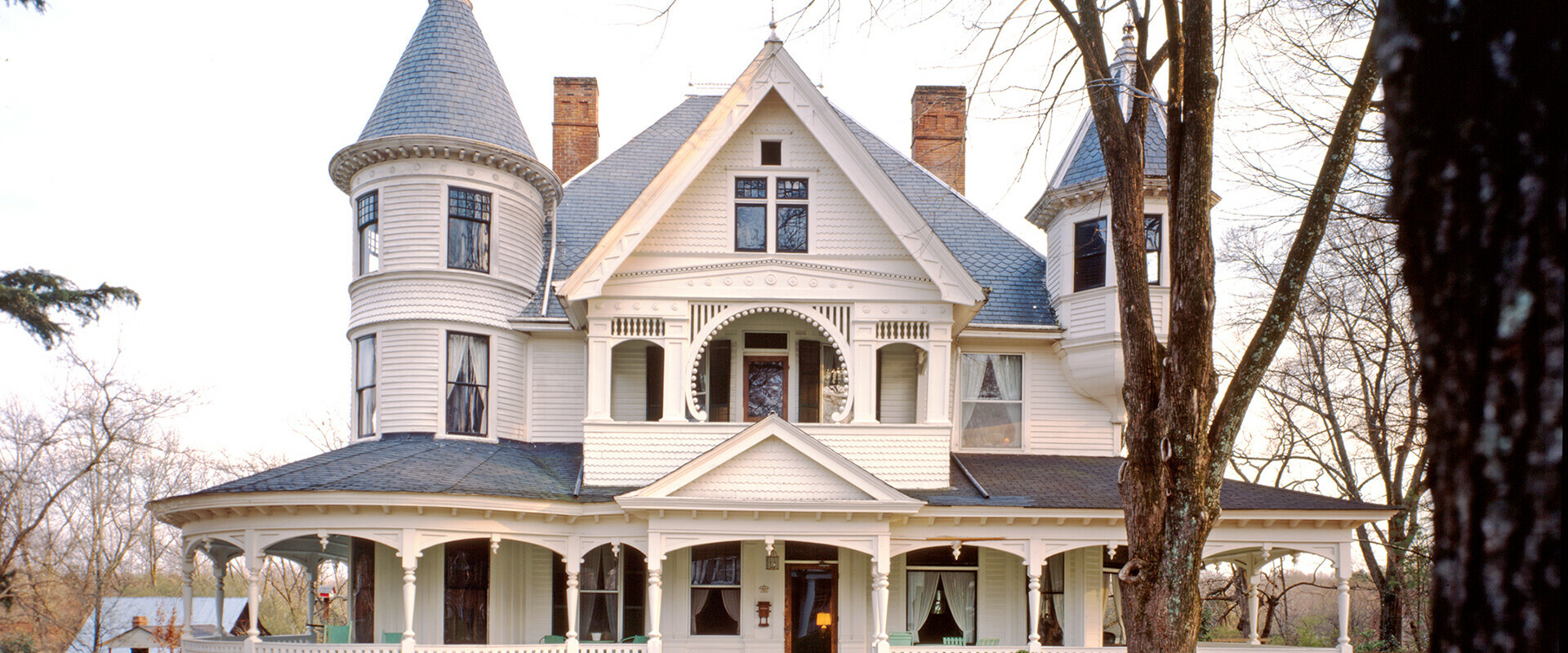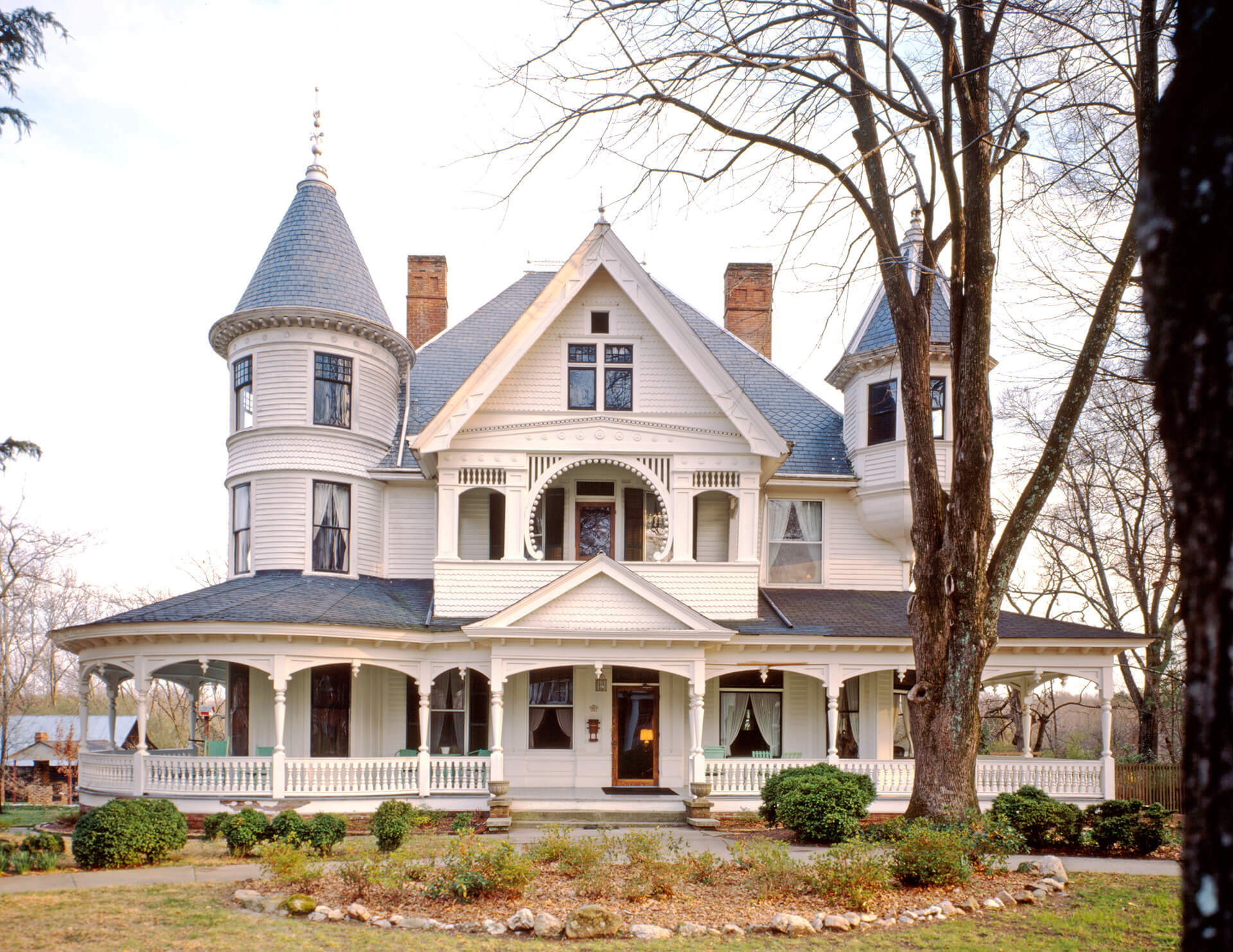ABOUT VICTORIAN ARCHITECTURE
Victorian architecture refers to work built during the reign of Queen Victoria 1837-1901. Culture in the Victorian era gradually moved toward romanticism and away from the rationalism of the Georgian era. Likewise, architecture during the period included many romanticist styles including Italianate, Gothic Revival, Scottish Baronial, Swiss Chalet, Colonial Revival, Second Empire, Eastlake, the Shingle and Stick Styles, Romanesque Revival, Greek Revival, Folk Victorian, etc.
VICTORIAN ARCHITECTURE CHARACTERISTICS
Because Victorian architecture drew from so many other architectural styles, Victorian buildings incorporate many different features. However, the defining characteristics generally include:
- Asymmetrical design
- 2 to 3 story floor plans
- Steeply pitched roof with decorative gables
- Round or octagonal towers
- Wraparound porches
- Bright colors
- Decorative trim and mouldings
Overall, Victorian architecture emphasizes the ornate. It takes its inspiration from early Gothic architecture with additional styles incorporated like French, Italian, and Tudor. See examples of Victorian architecture.
VICTORIAN STYLE MOULDINGS
Victorian style mouldings are typically elaborate combinations of shapes and profiles, frequently involving standardized profiles, fretwork and turnings made by machines. The spirit of Victorian architecture was opulence. This is reflected in highly detailed Victorian mouldings and trim. Tall wainscoting and baseboards were popular, as well as chair rail and picture rail mouldings.
HISTORY OF VICTORIAN ARCHITECTURE
Victorian architecture rose to popularity at the same time as the Industrial Revolution and this partly shaped the style. Modern advancements in technology allowed for mass production of building materials, while railroads facilitated transportation of these materials. That led to a rapid increase in the construction of Victorian style homes throughout England, North America, Australia, and New Zealand.
The Industrial Revolution brought additional wealth to many countries, which was reflected in the ornate, decorative Victorian style. Even middle class or lower class families were able to add decorative Victorian trim to their homes thanks to the mass production of mouldings.
This architectural era was preceded by the classic Georgian style that emphasized symmetry and simpler designs with less ornamentation. Victorian went in the opposite direction by embracing asymmetry and elaborate designs. Some classic examples of Victorian homes include the “painted ladies” of San Francisco, the Gingerbread House in Savannah, Georgia, and the Wedding Cake House in Kennebuck, Maine.








